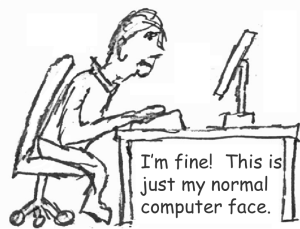Squints in Children’s Eyes
Have you even think that your kids may face a harmful problem to their eyes when they squints, tilts her head or rubs her eyes. And as a parents, the first thing come to their mind will be “OH! its just a bad habit!”. Just wanted to share a little about eyes squinting in kids can actually causes them a lifetime problem.
Always remember that in any point of time, if you do see kids doing the mention problems, please do schedule an eye examination immediately.
Eye Symptoms
For toddlers and children of any age, a number of symptoms require immediate medical attention. When your child’s eyes are sensitive to light, watery or red longer than a few days or develop crust or pus. Drooping eyelids, continuing eye pain, itching, or discomfort, eye rubbing and squinting are other symptoms to watch for. If eyes bulge, flutter up and down or side to side, or have yellow or whitish material in the pupil, let your doctor know right away.
Kids don’t know when they have vision problems, so they will make adjustments rather than complain. Knowing what to expect will make it easier for you to encourage your child through the process of getting those first eyeglasses.
Glasses and Good Vision
Even verywell-informed parents may not understand the importance of getting eyeglasses as soon as children need them. Some people think wearing glasses makes a child dependent on them. Others believe wearing glasses when young eliminates the need for them later. The simple truth is that children need glasses if they are nearsighted, farsighted or astigmatic–conditions that will neither go away nor get worse if not corrected with glasses or contacts. But it is very important to get glasses for children as soon as possible. Unlike adults, children with a vision problem may develop a second problem known as amblyopia or lazy eye. Once lazy eye develops, even with the right eyeglass correction one eye–sometimes both eyes–will not see normally.
Amblyopia
Amblyopia, commonly referred to as lazy eye, is a condition wherein vision does not develop properly in one eye. The brain increasingly relies on images from the stronger eye while “ignoring” input from the weaker eye. If left untreated during childhood, when the capacity for binocular vision is perfected, amblyopia can cause permanent visual impairment. Amblyopia correction requires forcing use of the weaker eye. Patching the stronger eye to necessitate use of the weaker eye is a mainstay of treatment. Drops or lenses that blur vision in the stronger eye may also be used, with the same rationale.
For a lifetime benefit for the children, we will highly recommend parents to do regular eyes check even for babies. 


No comments yet.